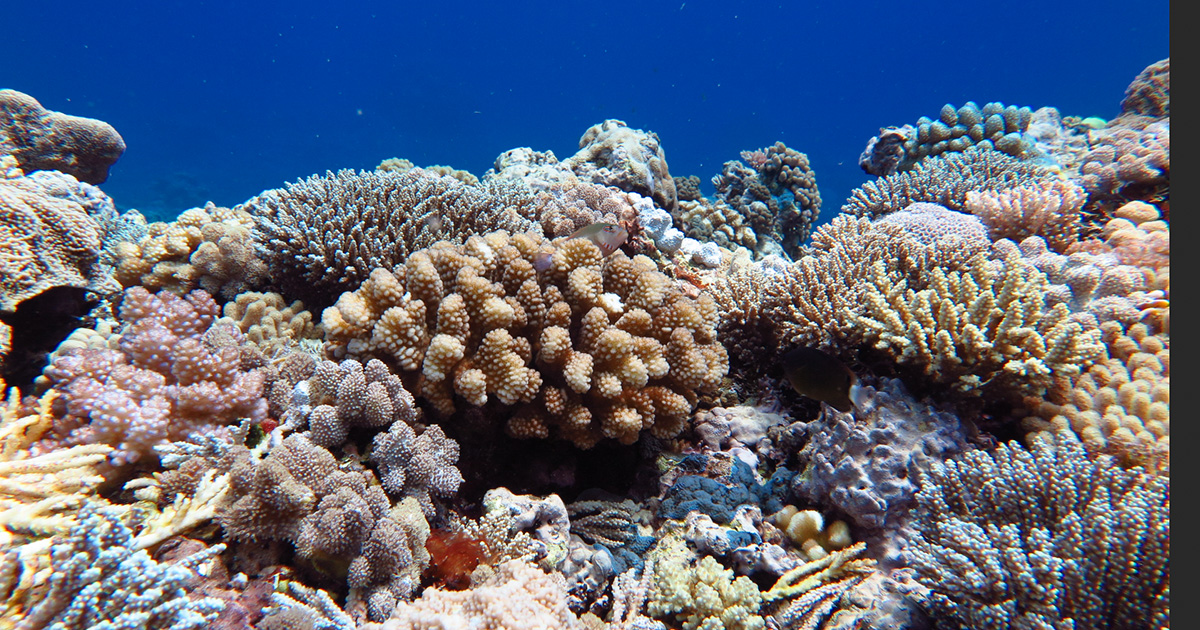Coral scientists are squaring up to the dilemma of selecting which and how many coral species will have their future underwritten by cutting-edge reef restoration research.
With climate change an increasing threat to the world’s coral reefs, an international team of scientists has devised an approach to selecting the coral species to be supported by research that could be used to restore damaged reefs.
Their findings, published in the Journal of Applied Ecology, will guide decisions in reef restoration programs around the world, including Australia’s Reef Restoration and Adaptation Program and the Australian Coral Reef Resilience Initiative.
 A diverse coral community around Heron Island on the southern Great Barrier Reef. (Image Credit: Ray Berkelmans)
A diverse coral community around Heron Island on the southern Great Barrier Reef. (Image Credit: Ray Berkelmans)
Senior author Professor Madeleine van Oppen, from University of Melbourne (U Melbourne) and Australian Institute of Marine Science (AIMS), said with more than 600 different species of coral on the Great Barrier Reef alone, scientists needed to decide which species were the most important to invest finite resources into researching, to optimize methods to increase coral reef survival in a warming world.
“If a program only has funds to focus on 20 or 30 coral species, it will want to focus on the sets of species to get the most ecosystem bang for its buck,” she said.
 A number of small corals, originally bred in an aquaria system sit on a coral seeding device on a reef on the Great Barrier Reef. (Image Credit: Carly Randall)
A number of small corals, originally bred in an aquaria system sit on a coral seeding device on a reef on the Great Barrier Reef. (Image Credit: Carly Randall)
“Current coral restoration programs tend to focus on easy-to-collect, fast-growing coral species, which have similar characteristics and cannot support ecosystem services on their own.”
The lead author, research professor Dr. Joshua Madin of Hawai‘i Institute of Marine Biology, said ensuring species diversity and ecosystem function in future coral reefs was critical.
 A research diver inspects a device designed to move young corals from an aquaculture facility to a reef on the Great Barrier Reef. (Image Credit: Taylor Whitman)
A research diver inspects a device designed to move young corals from an aquaculture facility to a reef on the Great Barrier Reef. (Image Credit: Taylor Whitman)
“The ecosystem services coral reefs provide us, such as coastal protection and fisheries, depend upon coral species with a broad range of ‘life history strategies’, for example slow to fast-growing, mounding to branching shapes, and under to upper story,” he said.
The researchers combined databases of traits of corals from Australia’s Great Barrier Reef with their ecological characteristics, including their resistance to thermal bleaching, to see how best to select sets of species for restoration using a hedging approach, much like that used for investment portfolios.
“Selection based on ecological characteristics is important for hedging against future species loss, whereas trait diversity is important for hedging against the loss of certain ecosystem services, reef-building groups, life history categories, and evolutionary variety,” Dr. Madin said.
 Prof Madeleine van Oppen in the AIMS National Sea Simulator. (Image Credit: Marie Roman)
Prof Madeleine van Oppen in the AIMS National Sea Simulator. (Image Credit: Marie Roman)
This approach provides a simple framework for aiding restoration practitioners in selecting target species for their projects, depending on spatial scale and resources.
It was developed during a workshop organized by U Melbourne and AIMS, with today’s paper being led by the University of Hawai‘i.



